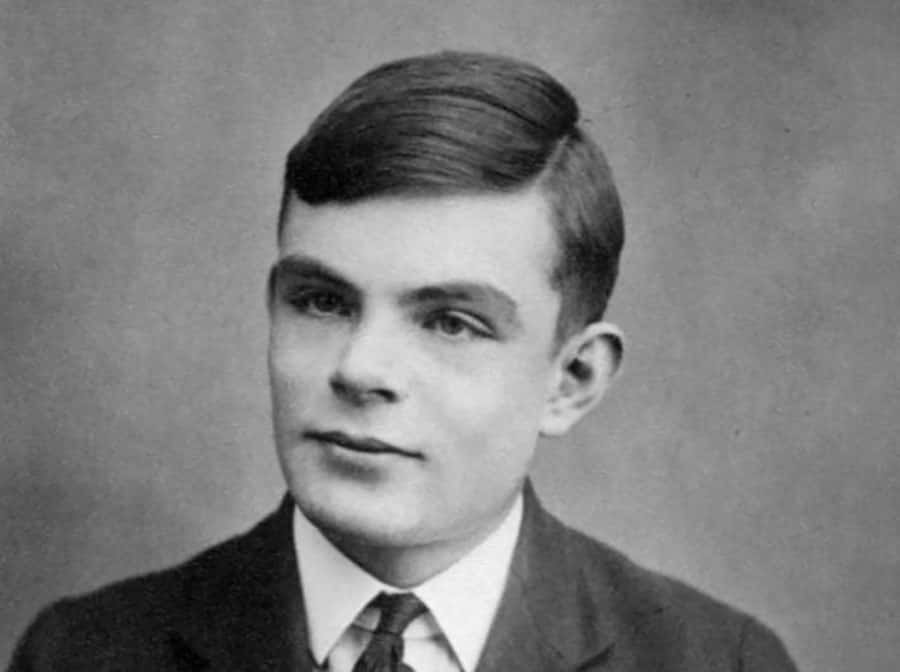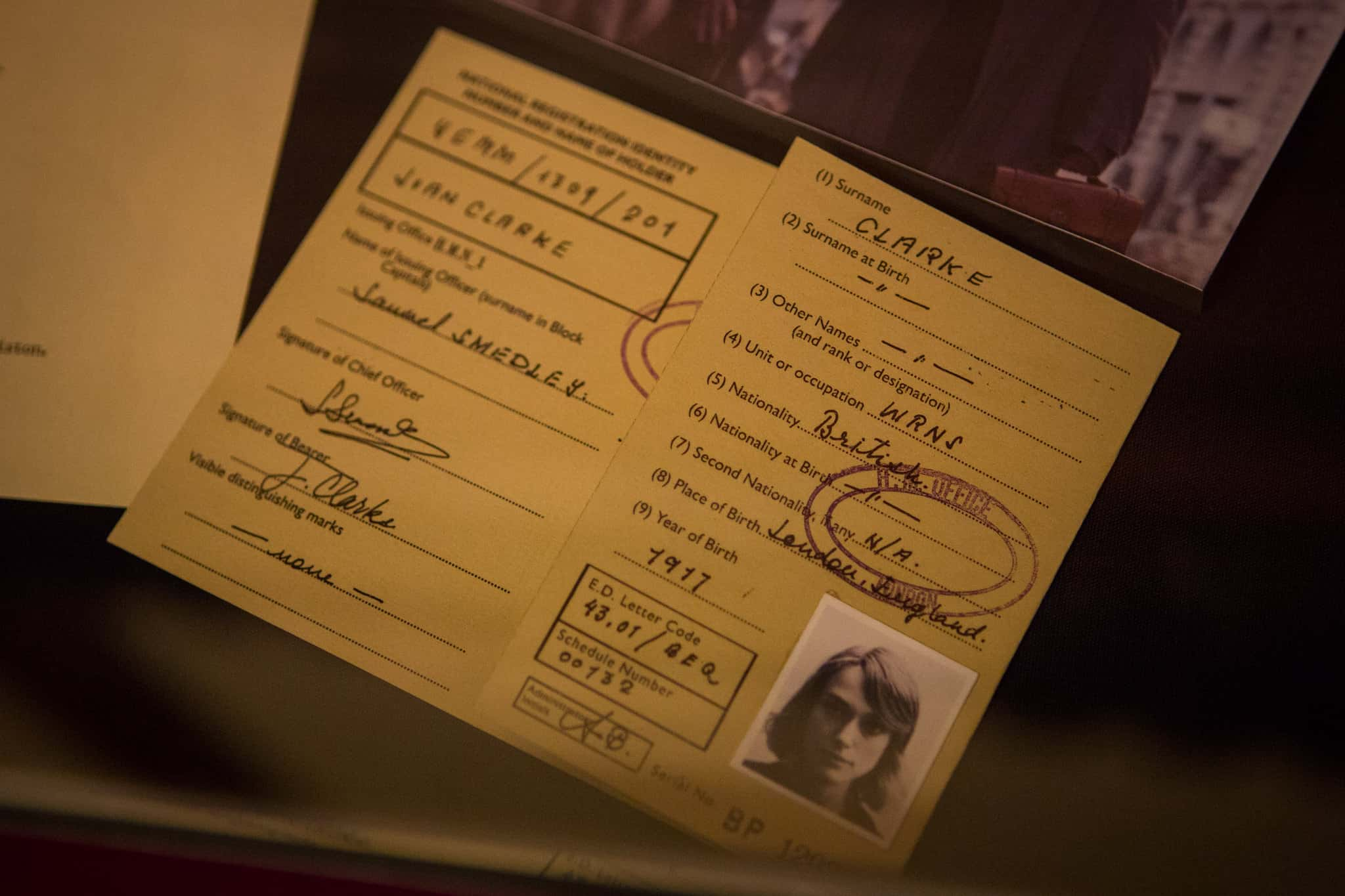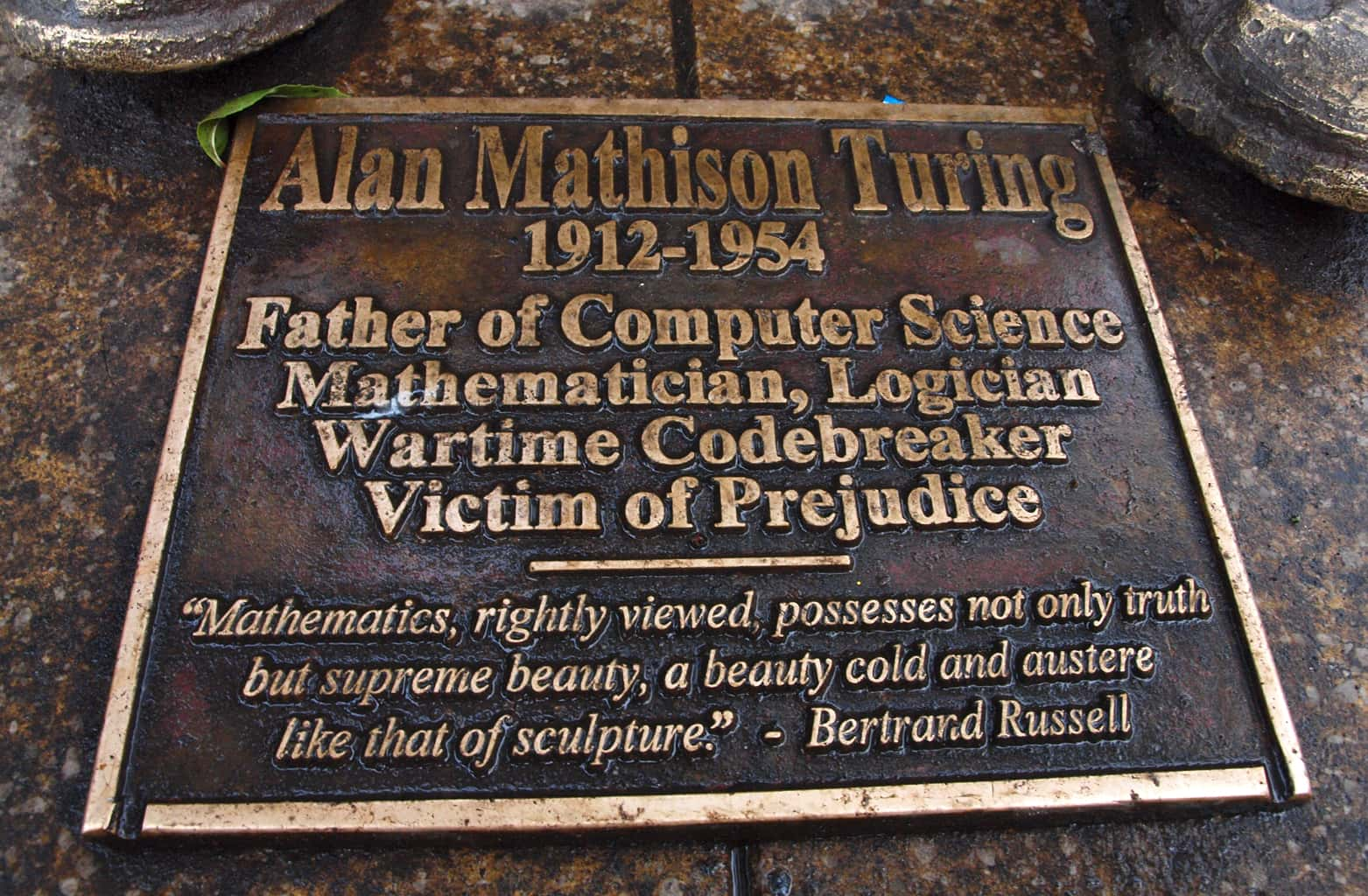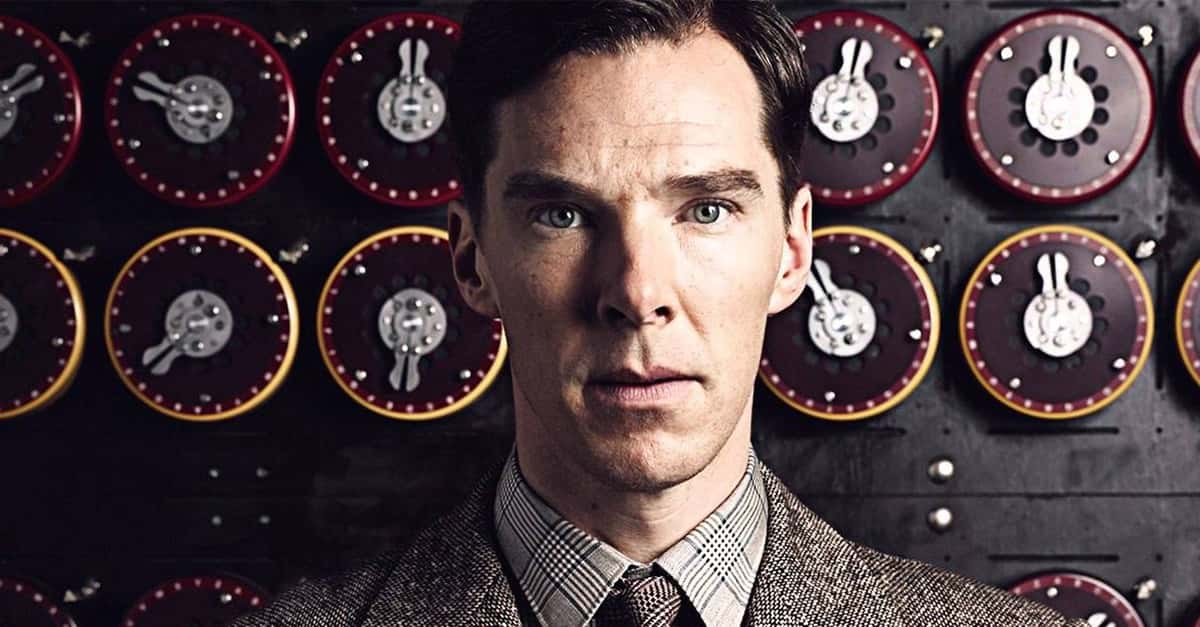“From a very young age, I knew about the legend of Alan Turing – among awkward, nerdy teenagers, he is a patron saint. He never fit in, but accomplished these wonderful things, as part of a secret queer history of computer science.”—Graham Moore, writer of The Imitation Game.
Some of you might have gone to see The Imitation Game starring Benedict Cumberbatch. If you did, then congratulations, you have an idea of who Alan Turing, the genius who helped the Allies win the Second World War, is. This computer scientist and cryptanalyst might not have lived long enough to see it, nor even receive much praise in the aftermath of his passing, but his contributions were eventually noted and hailed for what they were. Read about those contributions here within the 42 facts gathered on Alan Turing.
Alan Turing Facts
42. Indian Connections
As a child, Turing was raised in England, often under the care of a retired Army couple, as his parents were frequently traveling to India due to his father’s job in the Indian Civil Service. His great-grandfather had also been a general in the Bengal Army.
41. Turing? Turing? Turing?
In 1926, at the age of 13, Turing began attending classes at Sherborne School in the town of Dorset. It was there that he revealed his incredible skill in science and mathematics. Even though he had never studied calculus in elementary school, he revealed his ability to solve advanced problems while he was at Sherborne School.
40. Better Than Working at Hut Jabba
For a period of time during the Second World War, Turing spearheaded a section of Government Code and Cypher School at Bletchley Park. This section was known as Hut 8, and its main objective was breaking Enigma codes within the German navy. Turing was eventually replaced by his deputy, Hugh Alexander, in 1942, who was himself succeeded by Patrick Mahon in 1944.
39. Might as Well Call him ‘Smartypants’ While You’re at It
Turing displayed signs of his mathematical and scientific genius as early as public school. However, this was in a time when teachers didn’t always value those skills, putting more emphasis on classical studies. In fact, his headmaster once wrote “If he is to stay at public school, he must aim at becoming educated. If he is to be solely a Scientific Specialist, he is wasting his time at a public school.” Ouch…
38. Let’s Just Speculate for Now
Turing didn’t wait until the Second World War to start changing the world. As far back as 1936, when Turing was a student at Princeton University, he discussed an idea he had of a device “capable of resolving any problem that could be described by simple instructions.” This ‘Turing Machine,’ as it was called, became the groundworks for what we know today as the modern computer.
37. Money Where Your Mouth Is
Turing eventually went from philosophizing to more practical preoccupations in 1945. While he was busy in the National Physics Laboratory, Turing devised the Automatic Computing Machine, which was “the first digital computer with stored programs,” as opposed to how computers had previously needed to be manually rewired to accommodate separate programs.
36. War Contributions
Alongside Gordon Welchman, Turing designed a codebreaking machine called the Bombe, which helped codebreakers decode thousands of messages per day. Nearly 200 Bombes were constructed and put to use by the British during the Second World War.
35. Affectionate Nickname
Turing gained the nickname "Prof" amongst his colleagues at Bletchley Park. Subsequently, “The Prof’s Book” was the name given to Turing’s treatise on Enigma.
34. A Tribute He Would Love
Once a year, a chosen speaker gives a lecture on the subject of computer science. This lecture, co-hosted by the British Computer Society and the Institution of Engineering and Technology, has been held in such places as the University of Glasgow, London’s Royal Institution, and Belfast City Hall. In honor of Turing, it is called the Turing Lecture.

History's most fascinating stories and darkest secrets, delivered to your inbox daily.
33. Running for England
Turing’s athletic ability has been rather overlooked in favor of his genius skills with computers and his tragic end. During his own lifetime, Turing became an accomplished runner; he not only set new records at the Walton Athletic Club but he very nearly qualified to participate as a marathon runner for the United Kingdom at the 1948 Olympics. Keep in mind this would have already been after he’d helped win the war for the Allies.
32. Hey There, Delilah
One of Turing’s lesser known accomplishments is his completion, with the help of engineer Donald Bayley, of a portable secure voice communications machine. Given the codename "Delilah," the system was able to encrypt and decrypt a recording of a Winston Churchill speech when Turing demonstrated it to officials. Sadly, despite the fact that it worked, it didn’t have the “capability for use with long-distance radio transmissions” and was considered to have been built too late to make an impact in the Second World War.
31. Al and Chris Forever
While Turing was at Sherborne School, he developed a very close relationship with a fellow student named Christopher Morcom. They bonded over their shared love for mathematics and science. In fact, the relationship was such that Morcom has been described as Turing’s “first love.”
30. Broken Heart
Sadly for Turing, he later wrote that Christopher Morcom did not reciprocate his romantic feelings. He even claimed that Morcom “hated” it when Turing showed any signs of affection.
29. Fictionalized for Romantic Purposes
Contrary to a claim made in The Imitation Game, Turing did not name the first Bombe machine "Christopher" after his lost love from school. It was given the nickname "Victory."
28. Olympic Connection
In keeping with both his contributions to the Allies during the Second World War and his incredible athletic ability nearly getting him into the Olympics, Turing was symbolically involved in the torch ceremony when London hosted the Olympic Games in 2012. One exchange of the Olympic torch was performed in front of Turing’s statue in Manchester. Fittingly, the exchange was done on the 23rd of June, 2012, which happened to be the day that Turing would have turned 100 if he’d still been alive.
27. The Turing Test
In 1950, Turing created a test to measure artificial intelligence in machines. Turing didn’t believe in associating genuine thoughts with machines, arguing instead that it was better to gauge how well a machine could imitate human behavior, and thus persuade people that it isn’t a machine. This became known as the imitation game—hey, now we get it! It’s worth noting, however, that these ideas are thought by some to be slightly outdated now, given the incredible progress made in technology since then.
26. Only Behind 20 People?
In 1999, for his many contributions to the worlds of cryptology, mathematics, computing, and more, Turing was chosen by Time Magazine as one of the 100 most influential people of the 20th century. The British did one better; in 2002, BBC launched a nationwide poll asking people to vote on the Greatest Briton. When the final list of the top 100 were announced, Turing reached as far as #21.
25. He Knows What’s Up
While Turing and his team were busy in Bletchley Park trying to crack the Enigma code, the British government began voicing a lot of opposition to how much money they were getting when there were already so much expenses in the Second World War. Winston Churchill himself made a personal investigation into the matter, and later issued a memo which famously stated, “Give them what they want.”
24. Write to Your Prime Minister!
Even before these objections, Turing had shown his determination by breaking protocol to get the resources which he needed. Government officials at Bletchley Park ignored Turing’s requests for better staffing. Eventually, he and his fellow codebreakers went over the officials’ heads by hand-delivering a letter to Winston Churchill in 1941 requesting his personal assistance in changing things as quickly as possible.
23. Your Move
While Turing was at Bletchley Park, he worked alongside several people who were champions at chess—big surprise. Inspired by their enthusiasm for the game, Turing came up with an algorithm, and then later a program that would play chess, seeing at least two moves ahead to determine the best logical move to win. This idea of computer chess was so ahead of its time that when Turing first came up with the algorithm, no computer existed that could handle it.
22. Retroactively Praised
Eventually, Turing’s chess-playing program, known as the Turochamp Program, did come into being. In 2012, chess grandmaster Garry Kasparov played a match against the algorithm. While he beat it in 16 moves, Kasparov still expressed admiration for it, comparing it to an early version of a car in its lack of ability but endless potential for better models down the line.
21. It’s Not Who Did It First…
Contrary to the legend, Turing was not, in fact, the first man to break Germany’s Enigma Code. His work was certainly a wonderful achievement which contributed greatly to the war effort, but his work was an expansion on the original work done by three Polish mathematicians named Henryk Zygalski, Jerzy Rozycki, and Marian Rejewski. These men drifted away from linguistics to break codes and built “electro-mechanical machines to search for solutions.” The machines simulated an Enigma machine, predicting the codes which would be created. They were initially successful until the Enigma machines were made more complex.
20. …It’s Who Did It Best
Luckily, Allied spies provided news of the Polish code breakers and their methods back home to Britain. Not only that, Turing himself eventually met with the Polish team who had designed these code-breaking machines. Turing paid tribute to the Poles in the name of his “Bombe.” The Bombe was named after the Polish machines, which were called “bombas” after the ticking sounds which they made as they operated.
19. The Nobels for Computer Geeks
In 1966, the Turing Awards were introduced. These awards are given annually to celebrate contributions to the world of computing. We can only assume how many Bill Gates or Steve Wozniak have earned in their lifetimes!
18. Marry Me! Wait, Never Mind
In 1941, Turing proposed to Joan Clarke, a mathematician and cryptologist who worked with Turing in Hut 8. However, Turing felt he couldn’t go through with marrying Clarke due to his sexual orientation. After coming out to Clarke, the engagement was called off.
17. That’s Certainly Out of the Ordinary
Turing, like many people, suffered from hay fever, which was especially aggravated in the summertime. Unlike many people, Turing went to extreme lengths to suppress his hay fever. Whenever he’d go out bike riding during the summer, Turing would wear a gas mask. And no, fans of Doctor Who, he didn’t go around asking people “Are you my Mummy?” while wearing said gas mask.
16. Controlling Personality
Speaking of his bicycle, Turing was faced with a problem when one of the chains became faulty. Rather than fix or replace it, however, Turing figured out the precise moment when he could get off the bike and secure it before it fell out of place.
15. Afraid of Cooties?
It’s safe to say that Turing was an eccentric fellow. According to his own brother, Turing was known to chain his personal mug to the radiator in an effort to prevent people from using it, accidentally or otherwise.
14. More in Common Than You Think
In The Imitation Game, Turing has an enemy in the form of his overseer, Commander Alistair Denniston, played by Charles “Tywin Lannister” Dance. As you can imagine, Denniston is portrayed as having very little respect or understanding for Turing and his work. Turing is constantly forced to butt heads with Denniston in order to get things done. Ironically, the real-life Denniston had been a cryptologist who had been involved in breaking codes during the First World War.
 The Imitation Game (2014), Black Bear Pictures
The Imitation Game (2014), Black Bear Pictures
13. Sounds Like a Bromance
Speaking of things that The Imitation Game got wrong about Turing and Denniston’s relationship, one thing that was omitted was the fact that Denniston actively pursued Turing to get him involved in the operations at Bletchley Park. He even trusted Turing enough to let him take confidential documents back to his home; confidential documents about code-breaking during the Second World War, we wish to emphasize.
 The Imitation Game (2014), Black Bear Pictures
The Imitation Game (2014), Black Bear Pictures
12. No Bragging Rights??
As you can imagine, given the secrecy of the operation during the Second World War, Turing was not permitted to discuss his role during in breaking the Enigma Code during the Second World War.
11. Keeping the Secret
Turing’s role in cracking the Enigma code was listed as classified information until the 1970s. However, his exact techniques in cracking the code were themselves not declassified until 2013.
10. Persecuted for Being Himself
In 1952, Turing and Arnold Murray were charged with “gross indecency” after Turing was forced to admit that he and Murray were in a sexual relationship. This admission meant that they were guilty of violating a law that made gay relationships illegal. Turing was persuaded to enter a guilty plea rather than fight the charges, and was given the choice of imprisonment or probation, during which time he would have to accept hormonal treatment to reduce his libido—in other words, he was chemically castrated.
9. Too Late, but Better Late Than Never
Eventually, the UK government issued an apology for treating Turing so horribly. It took them until 2009, in response to a petition that had been circulating for a long time. In 2013, Turing was given a royal pardon from Queen Elizabeth, and in 2017, Turing’s Law went into effect. This law automatically pardoned those men who had been convicted of having consensual gay sex. No doubt Turing would have wanted that kind of legislation in his own lifetime, but we sadly can’t change the past.
8. Tragic Passing
On June 8, 1954, Turing’s body was found in his home, having died the day before, alongside a half-eaten apple. The cause of death was determined to be cyanide poisoning, and an inquest ruled that Turing had taken his own life. It was a tragic way for such a hero to die.
7. Tin-Foil Hats Sold Separately
Some people have speculated that Turing’s death was not due to suicide. According to Turing’s mother, she believed that the poisoning may have happened because of an “experimental device installed in his small room” which emitted cyanide fumes. It was apparently uncharacteristic of Turing, a man who regularly ate apples before bed, to leave it unfinished.
 Wikimedia Commons, D Sharon Pruitt
Wikimedia Commons, D Sharon Pruitt
6. Unexpected Inspiration
Despite said theory of an accidental death, it has been generally accepted that Turing died by suicide after ingesting the cyanide through the apple he’d left unfinished. Those who knew Turing have come out and explained that Turing seemed to have recreated a scene from his favorite fairy tale—and Disney movie—Snow White and the Seven Dwarfs. Biographer David Leavitt has written that Turing took "an especially keen pleasure in the scene where the Wicked Queen immerses her apple in the poisonous brew."
5. An Urban Myth, Sadly
There is a continued belief that Turing’s life and death are honored in the logo of tech company Apple, which you might remember is the image of an apple with a bite mark out of it. British actor, writer, and overall national treasure Stephen Fry had the chance to ask no less a figure than Steve Jobs whether this story was true. Jobs denied that it was true, but he added: “God, we wish it were.”
4. He Was Lance Armstrong Before there Was Lance Armstrong
One school problem that Turing faced on the very first day was how to get there in the first place. Due to a general strike being held, Turing had no conventional way to get to the school, which was reportedly more than 60 miles from his home. Turing’s solution was that he, a 13-year-old boy, would ride his bike to school, all 60 plus miles of the way.
3. The Running Man
This need to rely on his own physical endurance to get from place to place continued even when he worked at Bletchley Park. It wasn’t out of the ordinary for Turing to have to run 40 miles to London in order to attend an important meeting.
2. Master of War
The efforts of Turing and the rest of those who worked at Bletchley Park were so influential in figuring out the war that it has been estimated that the war in Europe was shortened by up to four years thanks to them!
1. Inspired by Him in Life and Death
Tragically, Turing's old school friend Christopher Morcom contracted bovine tuberculosis and died young because of complications from the disease. Turing naturally took his loss very hard, reportedly finding some solace in continuing to focus on the school subjects for which he was so passionate. These subjects became all the more important to him because, as he once wrote to his mother, “I know I must put as much energy if not as much interest into my work as if he were alive, because that is what he would like me to do.”


















































